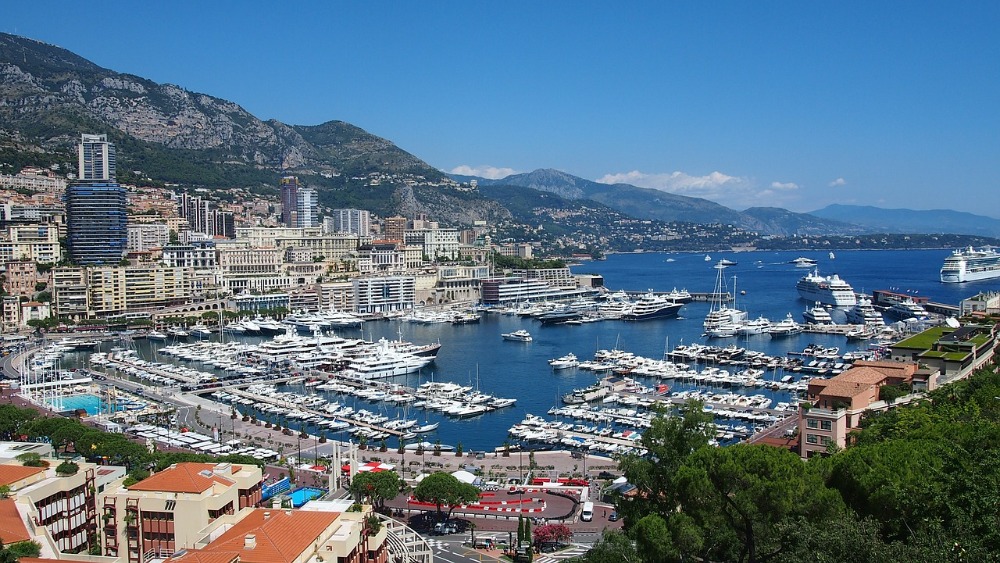Superyachts and portworthiness
Captain Glenn Mathias of the Australian Maritime Consultancy explores the importance of portworthiness…
Captain Glenn Mathias of the Australian Maritime Consultancy explores the meaning and importance of portworthiness
On occasion, a superyacht in port experiences a fire that burns out of control, despite fire fighting efforts of its crew and possibly shore brigades, rendering the yacht a total loss. Because yachts are owned by individuals who value their privacy, the cause of the fire is kept confidential and mariners lose a learning opportunity. It would be reasonable to accept that the fire may have been extinguished if the yacht had been portworthy. In simple terms, portworthiness is the ability of a vessel or a yacht, to withstand risks that could materialise in a port. (Portworthiness is first cousin to seaworthiness: generally, the ability of a vessel to withstand the perils of the sea).
Portworthiness is not a new concept and its principles were succinctly stated in Article V of the Rôles d'Oléron (c1266) – aka the Rules of Oléron – considered to be one of the oldest maritime codes for shipping and seamanship. They are also considered to have influenced Admiralty law. The Article, reproduced below from the Admiralty and Maritime Law Guide (30 Federal Cases 1171-1187), recognises that a vessel in port faces risk of loss and/or damage:
If a vessel departing from one port, laden or empty, arrives at another, the mariners shall not leave the ship without the master’s consent: if they do, and by that means she happens to be lost or damnified, they shall be answerable for the damage; but if the vessel be moored, and lying at anchor, with a sufficient number of men aboard to keep the decks and lading, they may go without the master’s consent, if they come back in good time; otherwise they shall be liable to make satisfaction, if they have wherewithal.
In small compass, the Article recognises the master’s right to determine the crew complement in port, to deal with risks to which the vessel is exposed. Despite the Rules dating from around 1266, the intent of the Article is just as relevant today – about 750 years later: there must be sufficient, and competent, crew on a vessel, to deal with risks to which the vessel is exposed.
With the enforcement of the ISM Code for all vessels – excluding private recreational vessels and superyachts – since July 2002, diligent shipowners have required sufficient senior officers and crew to remain on board in port. Only the master or the chief officer may go ashore and similarly, with the chief engineer and 2nd engineer. And only 50% of the crew can go ashore. This crew complement assures the shipowners and their liability insurers such as the Protection & Indemnity (P&I) Clubs, that the vessel should be capable of dealing with risks that could materialise – principal among these risks being fire, followed by unexpected heavy weather.
The risk of fire involves the resolution of two issues: first, sufficiency of crew and second, their fire fighting skills. Just as ISM Code vessels retain a minimum crew complement in port, the owner of a yacht – whose value could greatly exceed that of the average ISM vessel – must do likewise. In addition to requiring the master or chief officer, and chief engineer or 2nd engineer to remain on board, the minimum crew complement should be agreed following discussions with fire experts, underwriters, Class societies, P&I Clubs, yacht designers, builders and marine safety investigation agencies. The last-mentioned agencies would be expected to comment upon the crew complement at the time of a fire, including their fire fighting skills.
The second issue is the fire fighting skills of the crew, being skills that could extinguish or contain the spread of fire, depending upon its ferocity and timely arrival of shore assistance, where available. While all crew would have completed fire fighting training, the issue is whether the training facility was reputed as a leader (in the marketplace). Importantly, the training should have included a generic superyacht. Leaders in the marketplace could be known by reputation, similar to the reputations of masters, chief engineers and chief steward/dess. Owners, underwriters and recruiters must insist on crew being trained at facilities reputed to be leaders in fire fighting, with training conducted on generic superyachts.
The importance of fire fighting skills is best illustrated by cases involving two ships destroyed by fires in port, despite their masters and officers/crew being on board. The reefer vessel Star Sea became a total loss when, in May 1990, two days out from Corinto, Nicaragua, a fire in its engine room burned out of control because the master did not know how to use the CO2 extinguishing system. Tuckey J, in [1995] 1 Lloyd’s Rep 651, had this to say about the master:
The CO2 system was the most potent weapon to use in a fire-fighters’ armoury. Knowledge of when and how it should be used was essential. The master’s conduct demonstrates to my mind a massive ignorance of these essentials which can only be characterized as incompetence. Due to this incompetence I think the vessel was unseaworthy.
In the appeal, [1997] 1 Lloyd’s Law Rep. 360 at 373-374, Leggatt LJ confirmed that a single act by a master could constitute incompetence.
The car carrier Eurasian Dream, became a total loss in July 1998 in Sharjah, UAE, when a fire on a single car in the vessel was allowed to burn out of control. The master claimed not to have instructions or knowledge on how to fight such a fire. Cresswell J, in Papera Traders Co Ltd & Ors v Hyundai Merchant Marine Co Ltd & Anor [2002] 1 LR 719, criticised the master and crew:
150. The Eurasian Dream was not in a suitable condition and suitably manned and equipped. Although it is convenient to categorise the findings of unseaworthiness under three headings (The Vessel’s Equipment; Competence/Efficiency of the Master and the Crew; and Adequacy of the Documentation Supplied to the Vessel), I emphasise that these findings overlap and should be seen as one cumulative set of deficiencies.
The two vessels became total losses due to the lack of fire fighting skills; the crew complement was not at issue.
When considering the second risk in a port viz unexpected heavy weather, the crew complement would also enable the yacht to leave port and prevent hull damage through buffeting against the berth, fenders notwithstanding. And, if a vessel at a nearby berth were on fire, the yacht could leave port as a precaution against the fire spreading (to the yacht) at an accelerated and unexpected speed.
Requirements for owners
A diligent owner would also be involved with:
- Having the crew trained in fire fighting on their own superyacht by a professional fire fighter, giving the crew first-hand experience for a small price
- Requiring fire fighting exercises to be videotaped and forwarded to the owner (or manager), who would send a written report about the effectiveness of the exercise, to the master
- Ensuring masters have details of a port’s fire fighting resources
- Requiring maximum possible use of fire retardant or repellent material in the superyacht’s construction that should rival, if not exceed, the technologies being applied towards sustainability, emissions and green badging; yachts with such technology are not exempt from fire
- Encouraging research into revolutionary fire fighting systems with less reliance on cumbersome hoses and extinguishers.
Requirements for underwriters
As part of due diligence, underwriters should consider:
- Preparing a risk rating for crew not trained by a reputed leader in fire fighting
- Maintaining a register of crews’ fire fighting skills
- Maintaining a register of minimum crew complements on yachts
- Maintaining a register of ports rated by fire experts, for their fire fighting capabilities: vessels in lower rated ports would attract an additional premium similar to vessels trading outside Institute Warranty Limits
- Introducing, along with other underwriters and brokers, a rating system for fire fighting capabilities of ports and shipyards, being facilities that owe yacht owners a duty of care; aggregation of risk would require additional capability; in the event of a fire, courts would not accept outdated safety systems
- Requiring owners to insist that ports and shipyards accept the proposed rating system, which could reduce the risks to their huge financial investments
- Encouraging research into, and inclusion of, fire retardant material in yacht construction.
Innovations relating to superyachts usually deal with toys; luxury; sustainability; propulsion systems and hull coatings; but innovations in fire-retardant materials for superyacht construction are difficult to find. It’s time this vital element took its rightful place in superyachts.
NEW: Sign up for SuperyachtNewsweek!
Get the latest weekly news, in-depth reports, intelligence, and strategic insights, delivered directly from The Superyacht Group's editors and market analysts.
Stay at the forefront of the superyacht industry with SuperyachtNewsweek
Click here to become part of The Superyacht Group community, and join us in our mission to make this industry accessible to all, and prosperous for the long-term. We are offering access to the superyacht industry’s most comprehensive and longstanding archive of business-critical information, as well as a comprehensive, real-time superyacht fleet database, for just £10 per month, because we are One Industry with One Mission. Sign up here.
Related news

A matter of perspective?
With the homogenisation of sustainable practices being the goal, should we stop fixating on the rationale?
Business
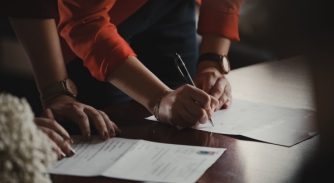

IPCC report paints a bleak picture
If climate change persists at this rate, regions and ecosystems that the yachting community relies upon will be irreparably damaged
Business
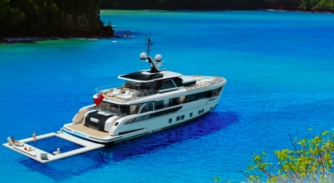
Dynamiq Yachts searches for a strategic or financial partner
The Italian superyacht builder is on the search for an as yet undisclosed type of business partner
Business
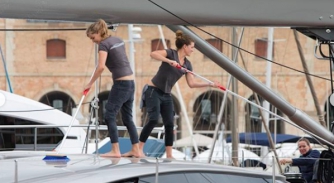
Girls do this, boys do that
Jenny Matthews, Founder of She of the Sea, is on a mission to change the narrative of the superyacht industry
Crew
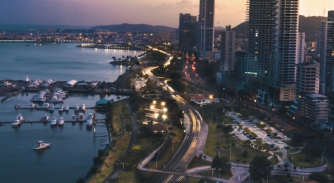
Panama open for charter
The superyacht industry takes another step towards becoming truly global as Panama opens its doors to charter
Business
Related news
A matter of perspective?
4 years ago
Leaky contracts
4 years ago
IPCC report paints a bleak picture
4 years ago
Girls do this, boys do that
4 years ago
Panama open for charter
4 years ago
NEW: Sign up for
SuperyachtNewsweek!
Get the latest weekly news, in-depth reports, intelligence, and strategic insights, delivered directly from The Superyacht Group's editors and market analysts.
Stay at the forefront of the superyacht industry with SuperyachtNewsweek


